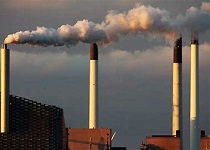The second annual report on ‘European financial flows on SDG7 to Africa’, commissioned by the Africa-EU Energy Partnership (AEEP), shows that there is a realistic pathway towards closing the investment gap on SDG7, provided several conditions are met by key stakeholders.
Under the current trajectory and growth rate of investments, SDG7 will be achieved by 2034. The AEEP’s inaugural, 2021 report, concluded that greater coordination could make SDG7 a reality in Africa by 2030. This second report continues examining Europe’s financial flows to Africa, this time for the years 2014-2020.
Building on the information from the first report, the 2022 edition measures how fast the rate of investment has grown due to the long-term support from African governments, multilaterals, and EU institutions and member states. For SDG7 to become reality by 2034, resources will have to continue to come from national and international governments, development institutions, and the private sector.
Given the pressures on public funds due to the COVID-19 pandemic and related debt pressures in recent years, the role of the private sector will be critical in closing the funding gap.
“We need sustainable energy for the people of Africa, not just the money to build it. It is time to enter medium-term execution mode at a continental scale with the modellers, engineers, utilities and providers of distributed solutions,” says Johan van den Berg, Head of Secretariat, Africa-EU Energy Partnership.
Team Europe continues to be an active catalyst of finance for SDG7 projects in Africa. In 2020 Team Europe committed EUR 1.93 billion to SDG7-projects, predominantly directed at renewable generation (EUR 1.1 billion), and transmission and distribution projects (EUR 778 million). Its consistent support over the past seven years has provided a foundation for ever more multilateral and private sector commitments. In the coming decade, EU finance will likely become a leading catalyst of additional private sector investment.
The progress made across the continent in significantly improving energy access levels and other key energy targets is also largely due to increased efforts from African states. In 2020, 47 African countries and five multilaterals and finance institutions, directed an estimated EUR 15.6 billion of public spending to the energy sector. This was the highest annual commitment across the seven-year study period.
With 24 million Africans gaining access to energy yearly between 2014 and 2019, the number of people without access progressively declined to around 572 million in 2019, according to IEA. Nevertheless, external lenders and international financiers, along with African national governments and financial sources, need to commit and disburse more money and technical assistance in the future.
Building a fully interconnected transmission grid in Africa and well-functioning power pools will be of utmost importance in the years to come. The achievement of SDG7, and the creation of an African Single Electricity Market (AfSEM), will advance hand-in-hand. The report indicates that an upgraded transmission and distribution infrastructure offers the best route to ensuring low-cost supply and accessible energy for all Africans.
The AEEP’s ‘European financial flows on SDG7 to Africa’ report was launched during the Spanish International Renewable Energy Conference (SPIREC), on 21 February 2023, in Madrid, Spain.
Established in 2007 as one of the partnerships of the Joint Africa-EU Strategy, the Africa-EU Energy Partnership (AEEP) is Africa and Europe’s gateway for joint action on a green energy future. With an unmatched overview of the political processes and initiatives across both continents, the AEEP maps, monitors and convenes the actions and stakeholders that drive the African and European energy transformation.

